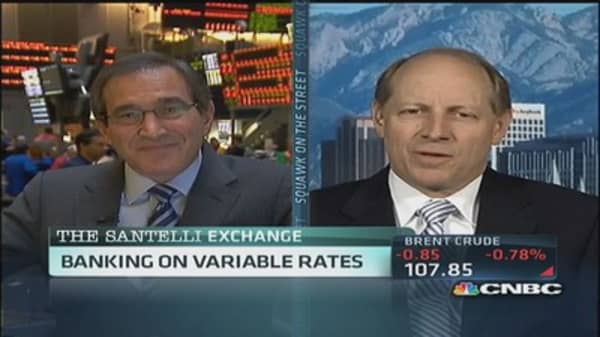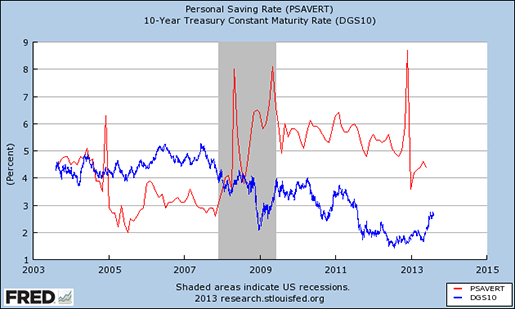Here's how Roger Garrison, an economist of the Austrian school, explains the natural rate of interest:
In the hands of the Austrian economists, the natural rate became the rate that reflects the time preferences of market participants and allocates resources among the temporally defined stages of production. The output of one stage serves as input to the next in this logical and broadly descriptive representation of the economy's production process. The temporal dimension of the economy's capital structure is a key macroeconomic variable in Austrian theory.
Time preference is simply a summary term that refers to people's preferred pattern of consumption over time. A reduction in time preferences means an increased future-orientation. People willingly save more in the present to increase the level of future consumption. Their increased saving lowers the natural rate of interest and releases resources from the final and late stages of production. Simultaneously, the lower natural rate, which translates directly into reduced borrowing costs, makes early stage production activities more profitable. With the reallocation of resources from late to early stages of production, the preferred temporal pattern of consumption gets translated into an accommodating adjustment of the economy's structure of production.
What the "too low" crowd is afraid of is that low rates created by central bank policy rather than savings sets the economy onto an unsustainable growth path. Because people will not actually have the future spending power that the low rates imply (or would imply, absent central bank meddling), business plans made to take advantage of that future spending will go bust. This is, in very brief form, the Austrian business cycle theory.
(Read more: The Errors of Inflation Hawks, Part I, Part II, Part III)
Lots of people influenced by Austrian economics, directly or indirectly, are under the impression that what we're seeing now is a classic instance of a central bank setting interest rates too low. They assume this is another instance when the Fed is artificially stimulating the economy, which is sure to lead to a boom and subsequent bust.
But, really, the proper way of applying the Austrian business cycle theory to currently circumstances leads to the opposite conclusion. Let's reverse Garrison's example and suppose that we experience a severe technological shock, discovering that a time-consuming production process is much less productive than expected. Future consumption—even diminished future consumption—can now be secured only with more of a sacrifice of current consumption. All other things being equal, interest rates would fall.
There would be, that is, a natural interest rate accelerator in the economy. Falling interest rates would lead to cheaper borrowing costs, encouraging more business investment. The natural interest rate would, in other words, moderate the slowdown caused by the technological shock.
In this circumstance, the great danger posed by central bankers is not that interest rates will be kept too low. It's that they might be kept too high. Investment will be artificially depressed by businesses seeing interest rates continue at the levels that prevailed before the shock. The economy will be put on a path of productivity that is lower than its actual capacity.
To understand what this hypothetical has to do with our current situation, just replace "technological shock" with "downturn in home price appreciation." The severe shock of falling home prices and a fall in long-term expectations in home price appreciation meant that future consumption could only be secured with a greater sacrifice of current consumption. People began to save more and borrow less, deleveraging households because they no longer expected to be able to consume out of income derived from home price appreciation.
The Federal Reserve was actually too slow to react to this because it did not appreciate the magnitude of the slowdown. This meant that monetary policy was too tight for too long. Even when rates came crashing down to low historical standards they were high relative to the rate that would have emerged naturally. And because even when they did fall, short term interest rates could not fall below zero, the interest-rate accelerator was overridden. The economy was set off on the path of underutilization of its capacity.
That's the answer to the question we began by asking. How do we know when rates are too low? The answer is that we know they are too low when savings desires are falling but rates are staying low. That is, when rates aren't adjusting downward to reflect changing time preferences. Right now we see nothing of the sort.


.530x298.jpg?v=1375110427)



